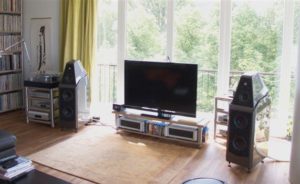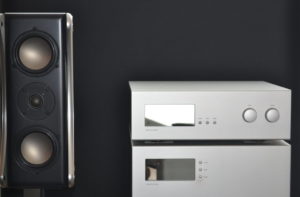Update of my music system, December 2016:
Dear Schnerzinger Team,
to fulfill my desire for something special and my new and growing needs regarding the reproduction quality of my hi-fi system I added some of your Schnerzinger products or made use of your fair upgrade service within the last years. Now I enjoy the Extreme 5000 series cables, the equipment-, speaker- and cable protectors. Each upgrade was clearly comprehensible, getting me closer and closer to my musical ideas.
But only the acquisition of the Giga Protector lifted my music system to unexpected musical heights; for instance now I can perceive the rise of a tone and its decay even more clearly. Music sounds more powerful, dynamic and homogeneous.
To me the Giga Protector is an absolute must in my music system. Without it I miss the sonic substance, the time accuracy and the musical energy, which is so important for my feeling of authentic perception. Music fills the room, it’s no longer subject of my observation but it takes shape within me.
If the GRID Protector convinces me just the same, there will certainly be no way round it too.I wish you all the best for the future.
Best regards
Ulrich S.For me your SCHNERZINGER cables are the absolute stroke of luck, but - as I assume - the nightmare for all other high end cable manufacturers! I was not fully satisfied with the sound of my very high value music system still, despite optimized room acoustics. I was just in the process to test one of the best and most expensive "state of the art" cables of the world market. Yes, I thought, this is it. These are even better than my current cables, which I used for a short while only. They satisfy me, although they are expensive, I will buy them. By recommendation and to my great good fortune I heard about Schnerzinger cables, unknown for me until then. I was skeptical, but also interested, so I postponed the purchase of the cables that I had just tested. After a first contact with Schnerzinger and a very friendly and informative conversation, we arranged a listening session at short notice.To me even the level X 3.000 series is a sensation in direct comparison to the "state of the art" cables that I was ready to purchase. They outclass the more expensive cables in all aspects. As soon as the complete system is equipped with Schnerzinger molecular processed cables, the sound snaps in a new level of quality, which I had considered to be impossible. My music system doesn’t sound any more, it makes music! The audio components perform such relaxed, dynamic and unlimited, that I believe that the musicians and their instruments are now standing within my listening room – naturally and realistically. I experience music as a whole, which I otherwise only know from live music. Pure Emotion – I’m finally happy and contented. I purchased the Schnerzinger cables and my long search for appropriate cables is done. For each demanding music lover I can only recommend to contact Schnerzinger and to convince yourself of the sensational cables and also of the Schnerzinger Molecular Processing.
Kind regards, also to your team
Ulrich S.
(Translated from the German original)
— Ulrich S. —







